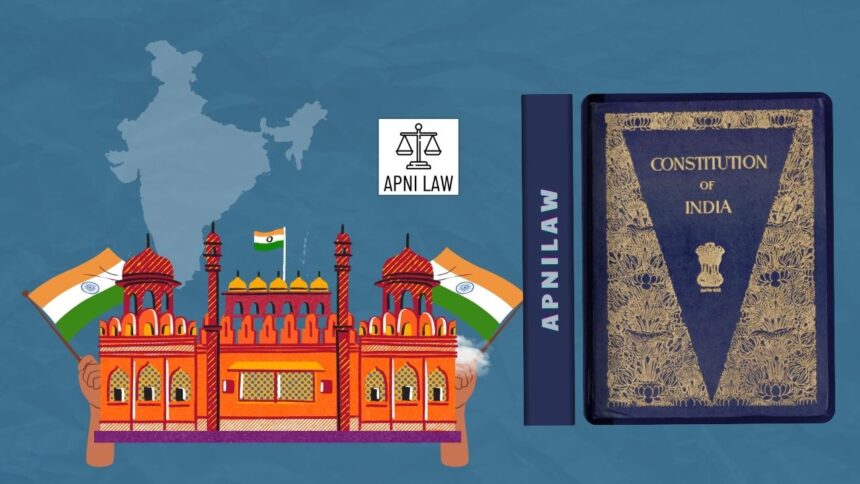Who Appoints the Chief Minister of a State?
The Chief Minister of a State in India is appointed by the Governor. The Governor invites the leader of the party or coalition that secures a majority in the State Legislative Assembly. The person appointed as Chief Minister must enjoy the confidence of the assembly. This confidence is the foundation of democratic legitimacy in the state government. If the leader chosen by the Governor is not already a member of the State Legislature, the Constitution allows six months to get elected. If the person fails to win an election within this period, the position automatically becomes vacant. This rule ensures that the Chief Minister always remains an elected representative who reflects the will of the people.
The appointment procedure follows constitutional conventions under Article 164. The Governor usually acts on well-established democratic practices and does not exercise personal discretion unless there is no clear majority. The entire process strengthens responsible government in the states and keeps the executive accountable to the legislature.
What Happens When No Party Has a Majority?
When no single party wins a majority in the assembly, the Governor must decide which leader is most likely to form a stable government. The Governor usually calls the leader of the largest party or the head of a coalition claiming majority support. The appointed Chief Minister must prove his or her majority on the floor of the house within a fixed time. This floor test prevents any confusion about the actual support of the government and keeps the executive answerable to elected representatives.
In hung assemblies, the Governor’s decision becomes crucial, but it must still align with constitutional norms. Courts have also stated that a majority must be tested on the assembly floor. The floor test ensures transparency and prevents horse-trading or political manipulation. Once the Chief Minister proves majority support, the government can function for the full term of the assembly unless the majority is lost later.
What Are the Eligibility Requirements for Becoming Chief Minister?
The Constitution lays down simple eligibility rules. The Chief Minister must be an Indian citizen and must be a member of the State Legislature. If the person is not a legislator at the time of appointment, they must get elected within six months. This rule matches the requirement for Union Ministers under the central government. It ensures that the Chief Minister is ultimately responsible to the people through the legislature.
There is no educational requirement for becoming Chief Minister. The Constitution focuses only on democratic legitimacy and representation. Anyone who meets the qualifications for becoming a Member of the Legislative Assembly or Legislative Council is eligible to become Chief Minister.
How Long Does the Chief Minister Hold Office?
The Chief Minister’s tenure depends entirely on the life of the State Legislative Assembly. The assembly normally lasts for five years unless dissolved earlier. Therefore, the Chief Minister can continue in office for the same period, provided the person enjoys the confidence of the majority. The Constitution does not limit the number of terms a Chief Minister may serve. Several Chief Ministers in India have served multiple terms and have held office for long periods.
The Chief Minister holds office at the pleasure of the Governor. This phrase is mainly a constitutional formality because in practice the Governor acts on the basis of the Chief Minister’s majority in the assembly. The moment the Chief Minister loses majority support, resignation becomes necessary. This structure ensures responsible government under the parliamentary system.
What Are the Executive Powers of the Chief Minister?
The Chief Minister acts as the real executive head of the state government. The Governor is the constitutional head and performs formal functions, but the Chief Minister and the Council of Ministers exercise actual executive authority. The Chief Minister advises the Governor on the appointment of ministers. The Governor appoints ministers on this advice, which means the Chief Minister plays the central role in shaping the government.
The Chief Minister distributes portfolios among ministers and decides their responsibilities. The Chief Minister guides their functioning, monitors the working of departments, and ensures coordination across various ministries. The Chief Minister has the authority to ask any minister to resign if required. This power helps maintain discipline and unity within the Council of Ministers.
The Chief Minister also decides the dates for summoning and proroguing the Legislature. This advice is binding on the Governor in practice. By controlling the legislative calendar, the Chief Minister influences the entire state’s policy agenda.
How Does the Chief Minister Guide Policy and Administration?
The Chief Minister shapes the policies of the state and oversees their implementation. The person acts as the leader of the government and sets the direction of administration. All significant policy decisions are taken in consultation with the Chief Minister. The Chief Minister approves proposals placed before the Council of Ministers and ensures that decisions align with the government’s goals.
As the head of the administration, the Chief Minister supervises the functioning of the bureaucracy. The Chief Minister stays in constant communication with senior officers, reviews programs, and ensures timely execution of schemes. This role connects political leadership with administrative machinery.
How Does the Chief Minister Act as a Link Between the Governor and the State Government?
The Chief Minister serves as the main channel of communication between the Governor and the Council of Ministers. The Constitution requires the Chief Minister to keep the Governor informed about decisions and proposals of the government. This communication ensures transparency and helps the Governor perform constitutional duties.
Whenever the Governor asks for information, the Chief Minister must provide it. This relationship maintains balance in the functioning of the parliamentary system. The Governor can warn or advise the government if required, but the elected government remains responsible for day-to-day administration.
What Is the Role of the Chief Minister in the Legislative Process?
The Chief Minister is the most important figure in the State Legislative Assembly. The person leads the government during debates, introduces important bills, and explains government policies. The Chief Minister answers questions asked by members and defends the government’s actions. As the leader of the house, the Chief Minister ensures smooth legislative functioning.
Since the Council of Ministers is collectively responsible to the Legislative Assembly, the Chief Minister must protect the government’s majority at all times. The Chief Minister must manage party members, keep the coalition united, and maintain political stability. Any major loss of support can threaten the government.
Why Is the Chief Minister Considered the Real Executive Head?
The Chief Minister runs the government in practice. The Governor acts on the advice of the Council of Ministers, and the Council acts under the leadership of the Chief Minister. This chain of authority gives the Chief Minister the central position in the state government. Almost every important administrative and political decision flows through the office of the Chief Minister. The person coordinates ministries, supervises administration, directs policy, and represents the state in national forums.
The Chief Minister also plays a key role in cooperative federalism. The person participates in meetings with the Prime Minister, attends the National Development Council, and coordinates with the central government on development schemes.
For any specific query call at +91 – 8569843472
Conclusion
The Chief Minister’s office is vital to the functioning of India’s federal parliamentary system. The Chief Minister is the leader of the majority, the head of the executive, the chief administrator, the key policy maker, and the primary link between the Governor and the elected government. The authority flows from the support of the assembly and the democratic mandate of the people. The position carries great responsibility and remains central to the political and administrative life of each Indian state.








